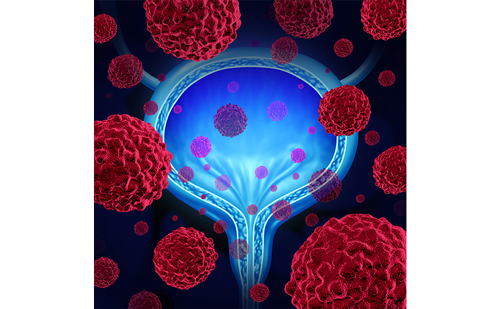Colorectal cancer will be diagnosed in 132,700 individuals in the US this year alone with rectal cancer being that of 39,610 patients.1 In contrast to the treatment developments in metastatic colorectal cancer, the treatment of locally advanced rectal cancer has remained at a standstill for the past decade with little development of novel therapies. 5-Fluorouracil (5-FU) has remained the standard of care for radiation sensitization, resulting in a pathologic complete response rate (pCR) of 5–20 %. Until recently, there appeared to be little interest from pharmaceutical companies in the role of radiation sensitization as an important component of drug development. Historically, no new treatment paradigm has evolved since the pivotal phase III German trial CAO/ARO/AIO-94 of neoadjuvant 5-FU-based chemoradiation therapy, resulting in a change in treatment sequence for a reduction in local recurrence (p=0.048).2
Multiple trials (STAR-01, ACCORD12/0405 PRODIGE 2, NSABP R-04, and PETACC-6) evaluated the potential benefit of oxaliplatin as a radiation sensitizer, but failed to demonstrate an improvement in pCR often at the risk for increased grade 3/4 toxicities.3–6 The recent phase III trial of CAO/ ARO/AIO-04 evaluated the role of oxaliplatin as a radiation sensitizer but also its role in the adjuvant FOLFOX (folinic acid, 5-FU, oxaliplatin) setting. The investigators noted improved 3-year disease-free survival for oxaliplatin versus standard 5-FU (p=0.03). Grade 3/4 toxicities developed in 23 % of patients with no improvement in pCR.7 Currently, oxaliplatin is not considered a standard of care in the treatment of rectal cancer.
Highlighted at the annual American Society of Clinical Oncology (ASCO) meeting this year was the potential of novel agents. The phase II trial of SWOG S0713 evaluated the role of the chimeric antiepidermal growth factor antibody cetuximab in combination with CapeOx in stage II/III rectal cancer as a radiation sensitizer. pCR was the primary objective that was achieved in 25 % of patients, yet grade 3/4 diarrhea was noted in 35 % of patients.8
Other contemporary agents explored include the poly (ADP-ribose) polymerase (PARP) inhibitor veliparib and the heat shock protein agent ganetespib.9,10 Poly (ADP-ribose) polymerase (PARP) binds to singlestrand DNA breaks and facilitates repair. PARP inhibitors should prevent the repair of DNA breaks in the setting of radiation therapy resulting in increased apoptosis. Veliparib (ABT-888) is an oral PARP 1/2 inhibitor. A phase I study of veliparib in combination with capecitabine was pursued in treatment-naive stage II/III rectal cancer patients. Patients received standard dose capecitabine (825 mg/m2 po BID, Monday to Friday [MF]) and 50.4 Gy. Veliparib was initiated on day 2 of therapy (Monday to Sunday) and completed 2 days after the conclusion of radiation therapy (20–400 mg po BID). A total of 32 patients were enrolled. The most common toxicities included nausea (53 %), fatigue (50 %), and diarrhea (50 %). A maximal tolerated dose was not reached. Two minor grade 2 dose limiting toxicities (DLTs) were noted, including radiation dermatitis and nausea. Patients proceeded onto total mesorectal excision (TME) within 5–10 weeks of completion of their radiation therapy. The pCR rate was 28 %. The recommended phase II dose for the further development of veliparib is 400 mg po BID. Ganetespib is a selective heat shock 90 protein inhibitor (HSP90) with promising preclinical activity in colorectal cancer cell lines. A phase I study of ganetespib (60–150 mg/m2 IV) in combination with capecitabine was pursued in treatment-naive stage II/III rectal cancer patients. Patients received standard dose capecitabine (825 mg/m2 po BID, M-F) and 50.4 Gy. Ganetespib was started on day 14 and continued until the completion of radiation therapy, but was held during week 4 of chemoradiation treatment. Sixteen patients were enrolled; 14 patients were evaluable for surgical response. Two DLTs of grade 3 diarrhea were noted. The pCR rate was 25 %. The recommended phase II dose (RPTD) of ganetespib is 100 mg/m2 in this combination.
To explore these novel agents further in the phase II setting, they will be incorporated into the NRG Network trial and total neoadjuvant therapy (TNT) umbrella trial (principal investigator: Thom George). This umbrella trial is under final development and will include promising radiation sensitizers when ready for phase II development. Patients are required to be treatment-naive stage II/III patients with low lying rectal tumors (5 cm from the anal verge) or to have high-risk features (T4 or N2/N3 disease). The control arm consists of eight cycles of FOLFOX followed by concurrent chemoradiation therapy with capecitabine (825 mg/m2, M-F) and 50.4 Gy of radiation therapy. The first two investigational arms will include veliparib at 400 mg po BID during concurrent chemoradiation therapy or ganetespib 100 mg/m2 IV (days 1, 8, 15, 29, and 36). It is hoped additional promising contemporary agents will continued to be added to the additional arms.
TNT has been designed specifically not to compete with the ongoing phase II/III PROSPECT (NO148) trial. PROSPECT is a unique trial that is evaluating the role of radiation therapy in mid-high-lying stage II/III tumors when contemporary FOLFOX is provided in the neoadjuvant setting. Patients with T4 or N2/N3 disease are excluded. The primary objective is noninferiority. Patients are randomized to standard concurrent chemoradiation therapy with 5-FU or capecitabine or the investigational arm of six cycles of neoadjuvant FOLFOX. If patients have had response (>20 % response rate) based on diagnostic imaging, they are allowed to proceed to TME. If the tumor has shrunk <20 %, then the patient proceeds to receive standard concurrent 5-FU-/capecitabine-based chemoradiation therapy. Provision of adjuvant therapy is at the discretion of the physician. The PROSPECT trial has now completed phase II enrollment and proceeds onto the phase III portion of the study design. If PROSPECT is positive, it may change the entire paradigm of the role of radiation therapy for midhigh- lying rectal tumors.
In conclusion, given the lack of paradigm change in the treatment of rectal cancer for the past decade, novel agents and approaches are an unmet need in the treatment of locally advanced rectal cancer. The author looks forward to the potential results of TNT as well as the potentially pivotal PROSPECT trial. What is clearly noted is that incorporation of novel agents like radiation sensitizers has clearly lagged behind development versus that of novel agents in metastatic colorectal cancer. The present author encourages pharmaceutical companies to become engaged early on and realize that their agent does not need to be US Food and Drug Administration approved in the metastatic setting before considering its capability as a radiation sensitizer. During early drug development, pharma should evaluate the radiation sensitization properties of their new agent. In short, novel agents are greatly needed for us to advance the treatment of locally advanced rectal cancer. We as physicians must encourage our patients to continue to enroll on clinical trials to assure pharmaceutical companies we are able to conduct and complete these clinical trials successfully to engage their interest.







